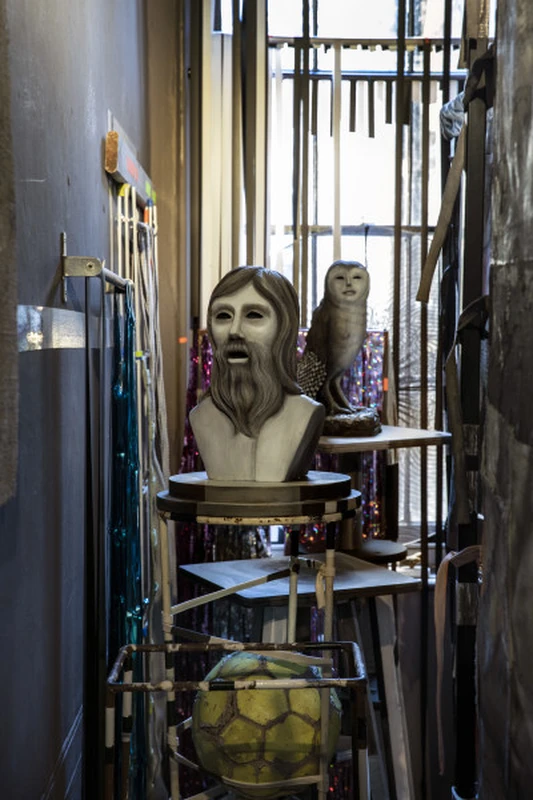Cathie Pilkington:Estin Thalassa
1 Jun-9 Jul 2021


Cathie Pilkington’s new exhibition, Estin Thalassa, at Karsten Schubert London's Room 2, is an extravagant and claustrophobic response to the dislocation and disorientation of the current times, an accumulation of manically cobbled and carefully composed elements and images, combining furniture-like structures – screens, dividers, fabric banners and richly painted velvet wall-hangings with traditionally modelled and polychromed sculptural objects.
The installation presents the spectator with optically dazzling patterns and motifs that flow unconstrained across disparate decorated surfaces alternately emphasising or camouflaging three-dimensional form and volume in a kind of excessive Gothic Vorticism.
Interwoven themes of disintegration, death, rebirth and reparation reveal a reflexive picturing of the creative process itself, an extended poemagogic meditation on the inheritance of the grand sculptural tradition filtered through lowly derivatives such as garden ornaments, toys and dolls. The result is a confusion of heterogenous styles and registers, a collision of folk culture and canonical high art motifs in a mass of dirty, glittery art historical laundry.
The exhibition is accompanied with a new essay by Neil Walton.